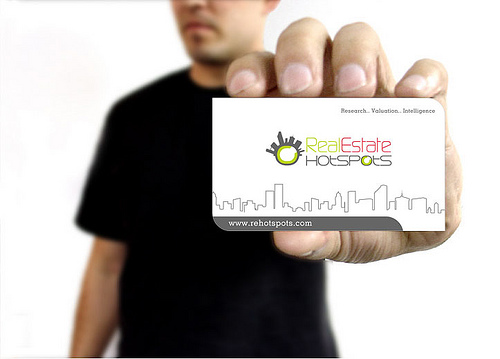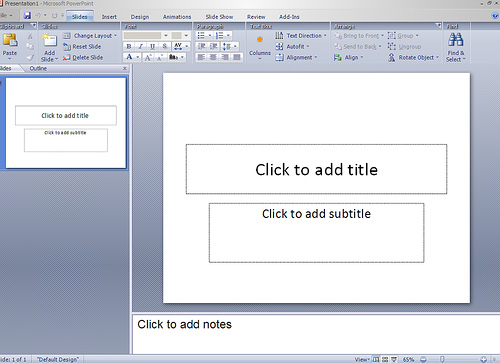The following guest post is from Outright.com.
It’s tax time, which means almost 21 million self-employed people are preparing to fill out their tax returns, including Schedule C: Profit or Loss from Business. Should be pretty easy – just enter how much money came in and went out of your business last year. Right?
Well, not so much. As we’ve learned from the thousands of people using Outright.com to help them with their business bookkeeping, it can be hard to know how to classify certain expenses. So we enlisted the help of two pros: Jeanne Neubelt of BookWorks Total Bookkeeping Services and Cheryl Hinkson of For Your Business Bookkeeping Services to get their perspective.
Based on input from the Outright.com user base, and with the assistance of our experienced bookkeepers, we’ve compiled a list of the 9 “hardest to classify” business deductions. They are:

photo credit: Shoa
1. Business cards
When you first hang out your shingle, you might head down to the local printer to get some business cards made up. But what kind of expense is that?
Which do I choose: Supplies, Legal & Professional Services or Advertising?
Recommendation: Advertising
As a self-employed individual, odds are your business cards will be given out to prospective customers in an effort to generate revenue. For this reason, the most appropriate category would be Advertising.
2. Web Site Hosting
You pay a monthly hosting fee to firms like GoDaddy or Dreamhost. But does that go under equipment rental? Office expense?
Which do I choose: Advertising, Utilities, Equipment Rental or Office expense?
Recommendation: Advertising or Utilities
According to Jeanne, this expense is similar to business cards in that it is likely used to help attract customers and drive revenue. However, Cheryl sees it a bit differently: “Web Hosting is a service and with a detailed P&L you would list it as Service Provider but on a simple P&L you will list it as a Utility.”

photo credit: laverrue
3. Stock photos/icons (and other digital media)
Which do I choose: Cost of Goods Sold, Office Expense, Supplies, Legal & Professional Services?
Recommendation: Cost of Goods Sold, Advertising, or Supplies
In this case, it depends on how the items are used. As Cheryl explains, “A web designer or graphic company that has signed up for unlimited access to stock photos available online would expense the monthly or quarterly fee to supplies for Cost of Goods Sold.” However, in the case where the images are being used for your business web site, “you could easily classify the expense as Advertising or Supplies”, says Jeanne.

photo credit: futileboy
4. Getting a DBA/Fictitious Name
You’re now in business for yourself, so you get a super cool name to use. How do you treat the costs of doing that?
Which do I choose: Taxes & Licenses or Legal & Professional Services?
Recommendation: Both, unless you file everything yourself
According to Cheryl: “Formation Fees should be broken into two categories: The portion of the fee that is paid to the state and the annual renewal fee should be recorded as taxes & licenses and the portion of the fee that is for professional services provided should be classified as legal & professional fees if you contracted a licensed professional to complete your formation documents.”

photo credit: Ajda GregorÄiÄ
5. Payments to web designers (and other contractors)
How do you treat the graphic designer who created the look and feel for your web site?
Which do I choose: Legal & Professional Services or Contract Labor?
Recommendation: Contract Labor
“Professional services is generally used only for legal, accounting/tax/payroll and business consultancy,” says Jeanne. Better to use Contract Labor – and “be sure to get a completed W-9 so you can send 1099s where appropriate.”

photo credit: computerjoe
6. Desktop software
You fork over the money to purchase the latest version of Adobe’s CS4.
Which do I choose: Supplies? Office Expense? Depreciation/Section 179?
Recommendation: Depreciation/Section 179
As Cheryl states, “Software Purchases are a depreciable item unless the program has a useful life of less than one year. In most cases you would not replace your software each year so it should be listed as a depreciable item.”

photo credit: KrAzY KorY
7. Web-based software subscriptions
Being the fan of web-based software that you are, you have monthly subscriptions to FreshBooks for your invoicing and Basecamp for your project management. But where do those expenses go?
Which do I choose: Utilities, Office Expense, or Taxes & Licenses?
Recommendation: Utilities or Office Expense
Here we get different opinions. For Cheryl, “In a simple set of books I would classify payments to a Web Services Provider to utilities as you are utilizing their program.” However, Jeanne recommends placing them under Office Expense.

photo credit: laszlo-photo
8. Postage
There are still times when you have to send this by snail mail. And that does in fact cost money.
Which do I choose: Supplies, Office Expense, Other Expense?
Recommendation: Office Expense if small, Other Expenses if significant
According to Jeanne, you would place the costs under “Office Expense if it is a few rolls of stamps or the postage meter for letters.” However, for large shipping costs, place them under Other Expenses.

photo credit: Yogi
9. Coffee machine, coffee and filters
You need your caffeine, we know. But what kind of deduction is that?
Which do I choose: Supplies or Office Expense?
Recommendation: Office Expense
“Office Supplies are physical widgets and stuff you use up (paper clips, pens, sticky notes, toner, legal pads, thumb drives, computer supplies, planners and calendars, etc),” says Jeanne. “Office expense might be more substantial or service related (janitorial supplies, cleaning service, coffee supplier, water cooler, etc.)”

photo credit: psd
Bonus expenses: Using the “other expenses” category
The following are very common self-employed expenses that should be placed under the “other expenses” category:
- Bank/ATM fees
- Survey and research costs
- Professional “How To” Books (web design, programming, etc.)
Outright is a very simple-to-use web service that helps you track income and expenses, pay estimated taxes on time, and see how your business is doing. It’s perfect for self-employed individuals, work-at-home people, sole proprietors, micro-businesses and anyone that files a Schedule C tax return. Outright was designed by former Intuit employees who realized that existing personal finance and small-business finance applications simply don’t address the needs of self-employed people. Outright is completely web-based, safe, and secure. Above all, it is designed expressly for people who have minimal computer skills and hate doing their taxes. On the web at http://outright.com/
